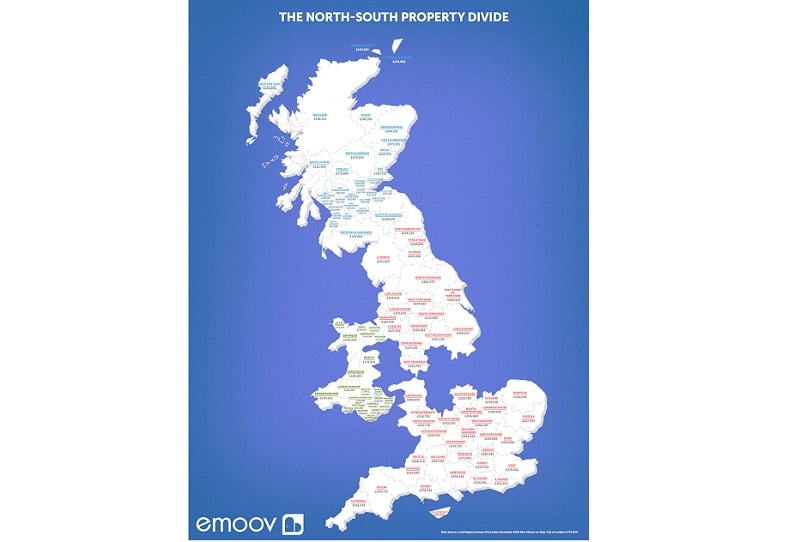The South East still has the highest levels of owner occupation.

There is a broad north/south divide in levels of owner occupation, an analysis of English Housing Survey data by TSB has showed.
At the peak of owner occupation in England in 2002, the South East had the highest level (76%), whilst London had the lowest levels of home ownership (59%).
Since then all regions have seen a steady fall, with the South East still being the region with the highest levels of owner occupation at 70%. London remains the region with the lowest levels at 50%.
Nick Smith, head of mortgages at TSB, said: “There is little doubt that owner occupation still remains the preferred housing tenure for many people. After a period of decline between 2002 and 2017, we are now starting to see an increase once again in the number of people owning their own homes.
“This is being fuelled, in the main, by a very competitive mortgage market and schemes such as shared ownership and help to buy which have both reduced some of the hurdles which first time buyers have faced when trying to get onto the housing ladder.”
There is a significant disparity in owner occupation rates across England, with almost a 60% difference between the highest and the lowest areas.
At local authority level, Rochford and Castle Point in the East region have the two highest levels of owner occupation at 82.9% and 82.6% respectively.
The East, the south east, the south west and east Midlands tend to have the higher levels of owner occupation.
The big exception is London. London tends to have the areas of lowest owner-occupation, reflecting its economic strength, its dynamic and transient population and emphasis on the rented sector.
Only six local authorities in England (Rochford, Castle Point, Blaby, East Dorset, Oadby and Wigston and Fareham) now have owner occupation rates above 80%, compared to 29 local authorities back in 2001.
Currently, the 10 local authority areas with the lowest levels of owner occupation are all in London.
Hackney and Tower Hamlets have the lowest levels at 23.8% and 24.2% respectively.
Major cities across England, for example Manchester, Norwich and Nottingham have also got lower levels of owner-occupation, again a reflection of the dynamic population, city-living and emphasis on the rented sector.
Young people have historically been less likely to own their own homes than older people, but this gap has increased over time.
In 2017-18 homeowners had an average age of 57 years – the oldest average age compared to other types of tenure.
During the same year around 208,000 private renters moved into owner occupation, with 52% of them being aged 25-34 years old and a further quarter (25%) aged between 35-44 years old.
Among private renters who moved into owner occupation, a third (33%) were couples with dependent children, with the majority (77%) stating that they wanted to buy a house of their own with many reporting that they wanted to accommodate a growing family.
A relatively small number of homeowners (11,000), moved to the social rented sector with a further 98,000 owner occupiers moving to the private rented sector. Those moving from owner occupation into renting were generally older, with 58% aged over 45.



